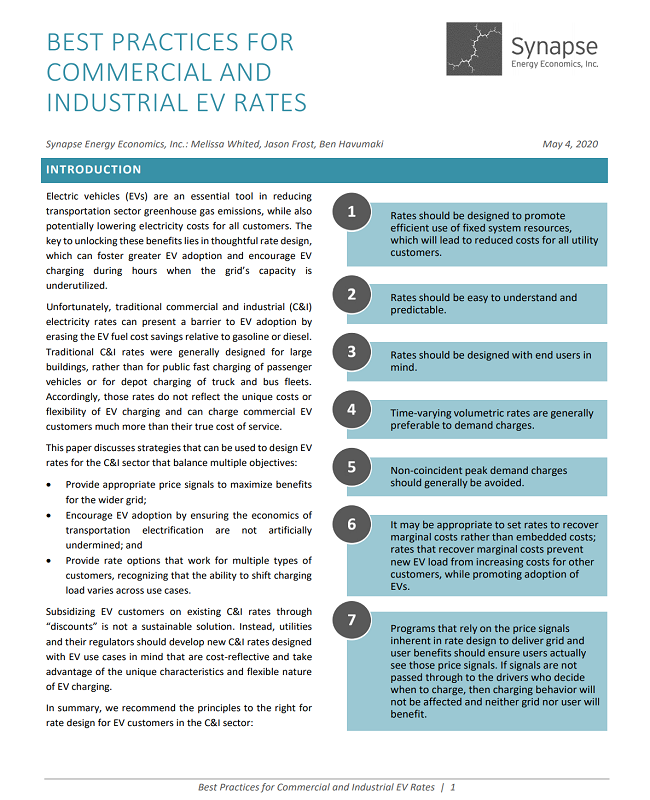Electric vehicles (EVs) are an essential tool in reducing transportation sector greenhouse gas emissions, while also potentially lowering electricity costs for all customers. The key to unlocking these benefits lies in thoughtful rate design, which can foster greater EV adoption and encourage EV charging during hours when the grid’s capacity is underutilized. Unfortunately, traditional commercial and industrial (C&I) electricity rates can present a barrier to EV adoption by erasing the EV fuel cost savings relative to gasoline or diesel.
Traditional C&I rates were generally designed for large buildings, rather than for public fast charging of passenger vehicles or for depot charging of truck and bus fleets. Accordingly, those rates do not reflect the unique costs or flexibility of EV charging and can charge commercial EV customers much more than their true cost of service. This paper discusses strategies that can be used to design EV rates for the C&I sector that balance multiple objectives.
Preview the report here:
More About this Resource
Publisher: Synapse Energy Economics
Date: May 4, 2020
Type: Research Reports
Tags: Best Practices, Charging Infrastructure, Electric Utilities, Grid Integration, Medium- and Heavy-Duty
Countries: United States
States: None

